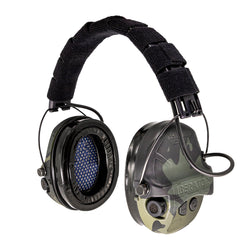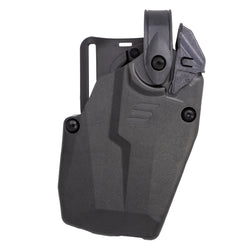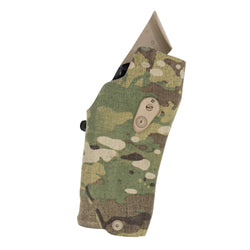The United States Marine Corps (USMC) has stood as a symbol of courage, discipline, and unwavering commitment to the nation since its inception in 1775. From the smoky taverns of colonial Philadelphia to the high-tech battlefields of the 21st century, the Marine Corps has evolved into one of the most formidable fighting forces in the world.
This article traces the Corps’ journey across 250 years of history, highlighting its transformation, traditions, and enduring mission.
Origins at Tun Tavern (1775)
The story begins on November 10, 1775, when the Continental Congress authorized the creation of two battalions of Marines to serve aboard naval vessels. The birthplace of the Corps is famously recognized as Tun Tavern in Philadelphia, Pennsylvania, where Captain Samuel Nicholas began recruiting “a few good men” to serve in the newly formed Continental Marines.

Their initial mission was clear: provide shipboard security, enforce discipline, and assist in amphibious landings. In February 1776, the Marines launched their first expedition, seizing British munitions at New Providence Island in the Bahamas. It was a bold debut that foreshadowed their expeditionary nature.

Early Conflicts and Identity Formation (1776–1865)
Following the Revolutionary War, the Continental Marines were disbanded, only to be reestablished in 1798 as tensions with France escalated. During the First Barbary War (1801–1805), Marines famously stormed the pirate stronghold at Derna, Libya, which is immortalized in the line “to the shores of Tripoli” in the Marine Corps Hymn.

During the War of 1812, U.S. Marines served aboard naval vessels and participated in amphibious operations against British forces. Though small in number, they played a vital role in shipboard combat and coastal raids, including the defense of Washington, D.C., and the Battle of New Orleans. These actions helped reinforce the Corps’ identity as a disciplined and adaptable fighting force.

The Mexican-American War (1846–1848) saw Marines scale the walls of Chapultepec Palace in Mexico City, earning the phrase “Halls of Montezuma.” These early campaigns helped forge the Corps’ reputation for aggressive expeditionary warfare.

During the Civil War, the Marine Corps played a limited role, primarily serving aboard Union naval vessels. However, this period saw the adoption of enduring symbols: the eagle, globe, and anchor emblem in 1868, and the motto “Semper Fidelis” (“Always Faithful”) in 1883.

Pictured by an unknown photographer, five U.S. Marine Corps privates with fixed bayonets under the command of their noncommissioned officer (NCO), who displays his M1859 Marine NCO sword. Navy Yard, Washington, DC, April 1864. (Library of Congress Prints and Photographs Division. Public Domain)
Global Reach and Amphibious Doctrine (1898–1945)
The Spanish-American War (1898) marked a turning point. Marines led landings in Cuba, Puerto Rico, and the Philippines, showcasing their rapid deployment capabilities. In the early 20th century, the Corps was involved in numerous “Banana Wars” across Central America and the Caribbean, refining tactics for small wars and counterinsurgency.

World War I solidified the Corps’ reputation for ferocity. At Belleau Wood in 1918, Marines launched a brutal assault against entrenched German forces. Their tenacity earned them the nickname “Devil Dogs” from their adversaries.

World War II was the crucible in which the modern Marine Corps was forged. The Corps pioneered amphibious warfare, executing massive beach landings across the Pacific Theater from Guadalcanal to Iwo Jima. The iconic flag-raising on Mount Suribachi became a symbol of American resolve.

Cold War and Modernization (1946–1991)
In the postwar era, the Marine Corps adapted to new geopolitical realities. During the Korean War, Marines executed a daring amphibious landing at Inchon and fought valiantly at the Chosin Reservoir, enduring brutal winter conditions and overwhelming enemy forces.

Vietnam presented a different challenge: jungle warfare, counterinsurgency, and civic action. Marines operated in complex environments like Hue City and Khe Sanh, often engaging in close-quarters combat and pacification missions.

Throughout the Cold War, the Corps maintained readiness for rapid deployment, developing the Marine Air-Ground Task Force (MAGTF) concept, a flexible, self-sustaining unit capable of operating independently. This doctrine remains central to Marine operations today.
Post-Cold War and the War on Terror (1991–Present)
The 1990s saw Marines deployed in humanitarian and peacekeeping missions, from Somalia to Haiti. In Somalia, they provided security for relief operations during Operation Restore Hope, navigating complex clan dynamics and lawless conditions to deliver aid. In Haiti, Marines helped stabilize the country during Operation Uphold Democracy, supporting efforts to restore the elected government and maintain civil order.

During the First Gulf War, U.S. Marines were among the first American forces deployed to the Persian Gulf as part of Operation Desert Shield, tasked with defending Saudi Arabia from Iraqi aggression.
When Operation Desert Storm commenced in January 1991, Marines launched a massive ground assault into Kuwait, breaching Iraqi defenses and liberating the country in just 100 hours. Their swift and decisive actions, particularly in battles like Khafji, demonstrated the Corps’ effectiveness in large-scale mechanized warfare and reinforced its role as a rapid-response expeditionary force.

In 2001, following the September 11 attacks, the Corps was among the first to enter Afghanistan, conducting operations against Taliban and al-Qaeda forces. Marines executed rapid strikes in remote regions, often relying on helicopter-borne assaults and small-unit tactics to disrupt enemy networks. Their presence in Helmand Province later became central to counterinsurgency efforts, where they faced prolonged combat while working to stabilize local communities.

Marines spearheaded the 2003 invasion of Iraq, swiftly advancing through hostile terrain and securing key objectives. Their involvement reached a critical point during the intense urban fighting in Fallujah in 2004, where they confronted entrenched insurgents in one of the fiercest battles of the war. These operations underscored the Corps’ evolving role in asymmetric warfare, requiring a balance between conventional combat and stabilization efforts.

Modern-day Marines continue to serve in diverse roles: crisis response, embassy security, cyber operations, and humanitarian aid. The Corps has embraced technological advancements, integrating drones, cyber warfare capabilities, and advanced communications into its arsenal.
Culture, Traditions, and Legacy
Despite its evolution, the Marine Corps remains deeply rooted in tradition. Every Marine, regardless of rank or role, is instilled with the ethos of honor, courage, and commitment. Boot camp at Parris Island or San Diego is a rite of passage, forging individuals into members of a tight-knit brotherhood.

The Marine Corps Birthday Ball, celebrated annually on November 10, honors the founding at Tun Tavern. The reading of General John A. Lejeune’s birthday message and the ceremonial cake-cutting reinforce the continuity of the Corps’ legacy.

Symbols like the Eagle, Globe, and Anchor, the blood stripe on dress blues, and the phrase “Once a Marine, Always a Marine” reflect a culture of pride and permanence.
Looking Ahead
As the global security landscape shifts, the Marine Corps is undergoing transformation. The Force Design 2030 initiative aims to reshape the Corps for future conflicts, emphasizing distributed operations, littoral combat, and integration with naval forces.
Marines are preparing for potential conflicts in the Indo-Pacific, focusing on island-hopping strategies reminiscent of World War II. The Corps is also investing in unmanned systems, artificial intelligence, and expeditionary advanced bases to maintain its edge. Yet, amid all change, the core mission remains: to be the nation’s rapid-response force, ready to fight and win in any clime and place.

A U.S. Marine with the 31st Marine Expeditionary Unit tests a 3D printed PVS-31 mount in a simulated field scenario at Camp Hansen, Okinawa, Japan. The 31st MEU is the Marine Corps’ only continuously forward-deployed MEU, ready to perform a wide range of military operations as the premier crisis response force in the Indo-Pacific region. (U.S. Marine Corps photo by Lance Cpl. Raul Sotovilla. Public Domain)
Final Thoughts
From the wooden decks of 18th-century frigates to the digital battlefields of today, the United States Marine Corps has remained steadfast in its commitment to the nation. Its legacy is not just one of battles won, but of values upheld—discipline, loyalty, and sacrifice.
As the Corps marks 250 years of service, it stands not merely as a military institution, but as a living embodiment of American resilience. The spirit of Tun Tavern lives on in every Marine who answers the call, ready to defend the republic with grit and honor.









